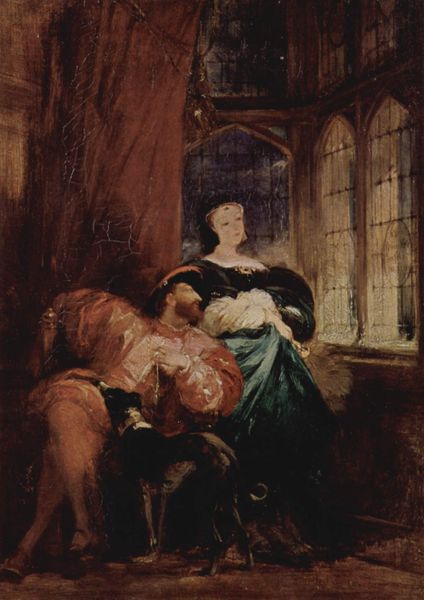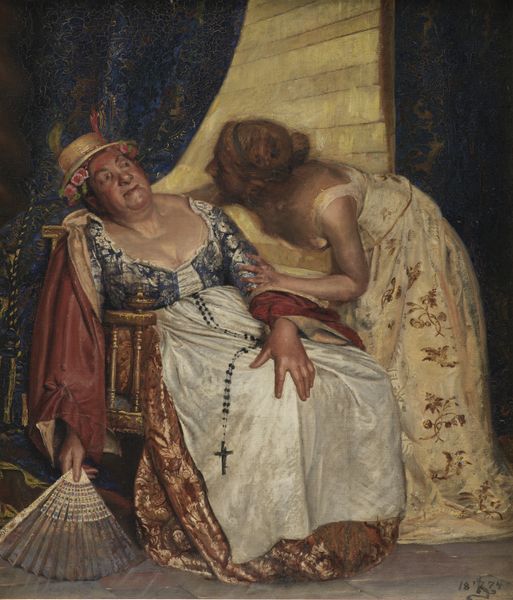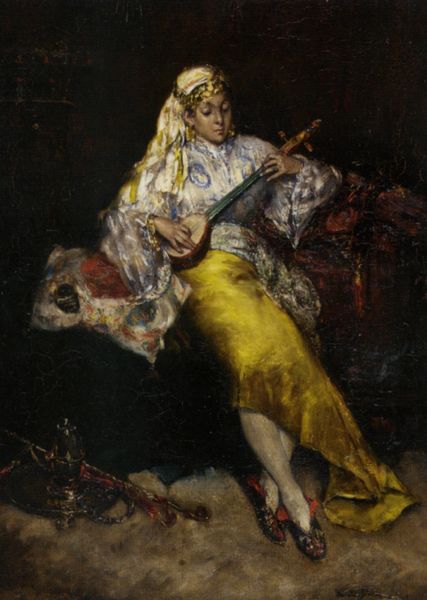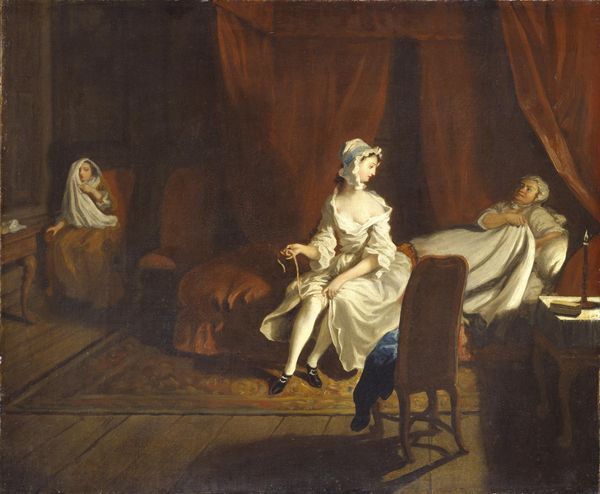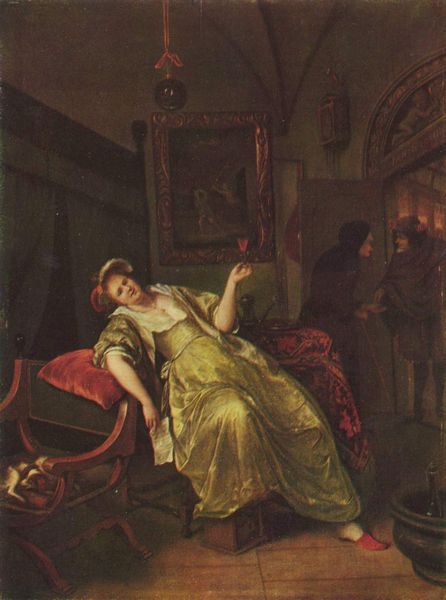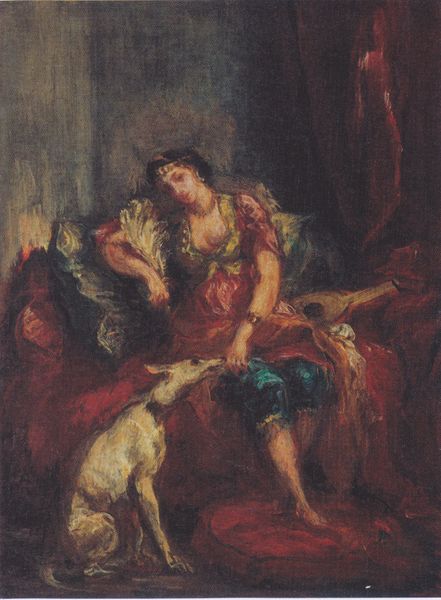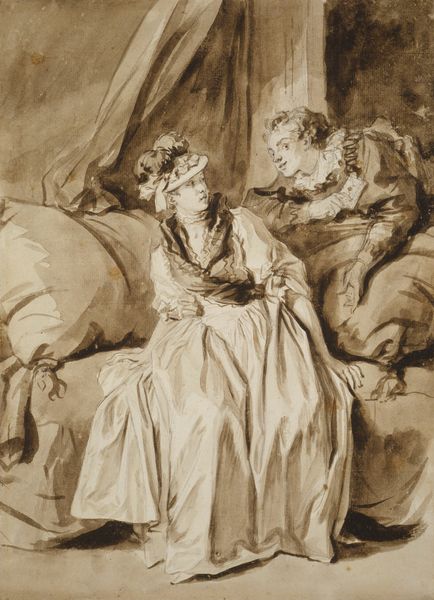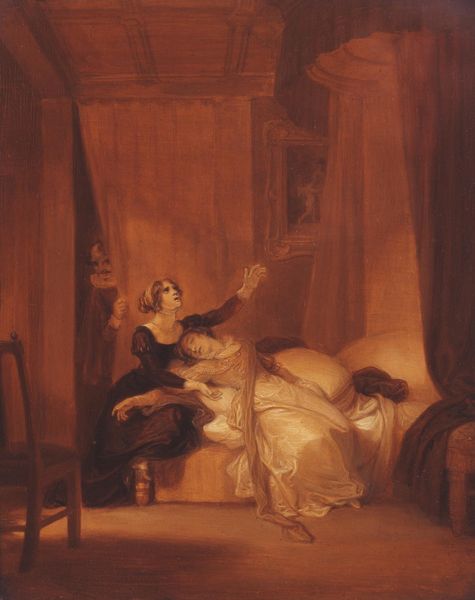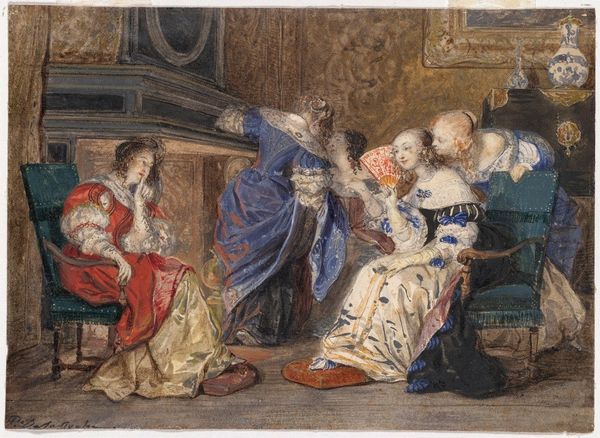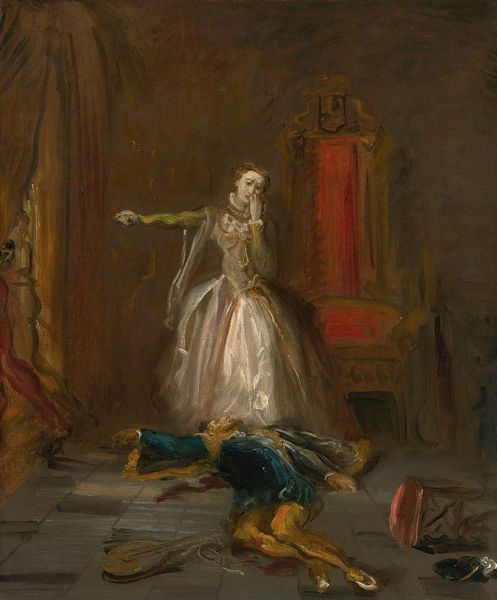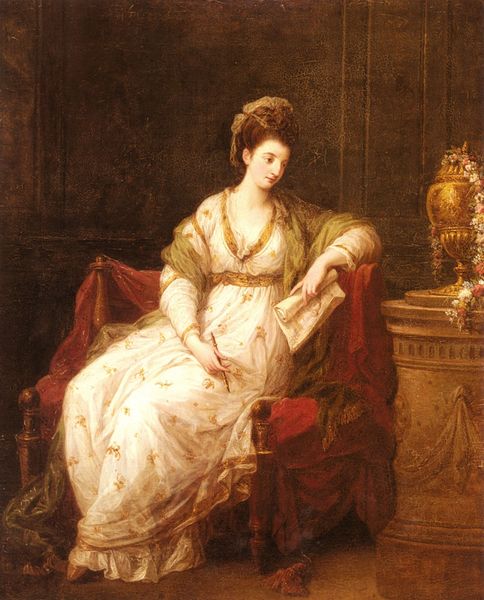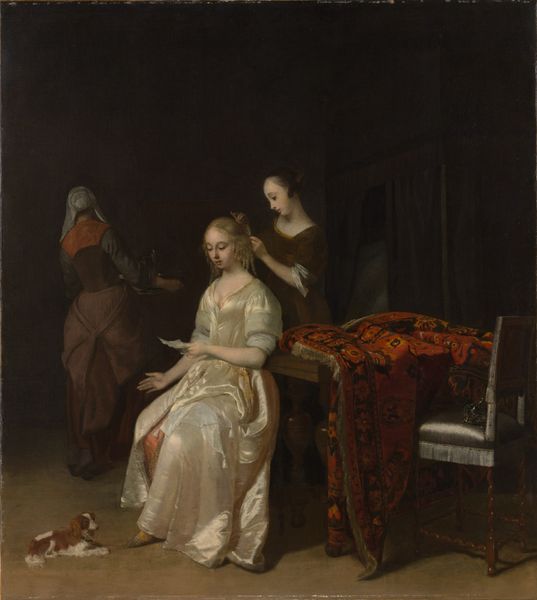
oil-paint
#
portrait
#
allegory
#
narrative-art
#
baroque
#
oil-paint
#
oil painting
#
history-painting
#
portrait art
Copyright: Public domain
Editor: This is Nikolaus Knüpfer’s “Sophonisba,” painted in 1635 using oil paint. It looks so theatrical. The woman’s pose and dress, the shadowy figure lurking in the background – it feels like a stage scene. What strikes you about this work? Curator: The arrangement of elements immediately stands out. Consider the diagonal axis established from the figure on the left towards Sophonisba. This inclination guides the viewer's eye through the composition. Do you observe the contrasts in color temperature at play? Editor: I do. The warmer tones of Sophonisba's dress juxtapose the cooler hues in the background. It really pushes her forward. It almost looks like she is bathed in candlelight. Curator: Precisely. Observe how the artist uses light to define forms and create depth. There’s a dramatic chiaroscuro that enhances the emotional intensity, don’t you think? Editor: Yes! The lighting emphasizes her distress. What do you make of the material Knüpfer used? Is the visible brushwork deliberate? Curator: Indubitably. Notice how the textured brushstrokes contribute to the overall sense of movement and dynamism. It disrupts any illusion of perfect representation. The surface is not merely a vehicle, but an active participant in the work’s aesthetic presence. It reflects the baroque taste for grandeur and drama, but here filtered through the influence of Rembrandt. Editor: So, by looking at brushstrokes, color temperature, composition, we can move beyond subject matter? I didn't expect that! Curator: Indeed. Concentrating on visual language reveals much. This detailed analysis gives one a different perspective on this tragic tableau, would you agree? Editor: Definitely. I feel like I understand the intention and effort Knüpfer put in on the art, to get this amazing aesthetic result.
Comments
No comments
Be the first to comment and join the conversation on the ultimate creative platform.
